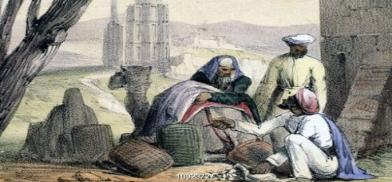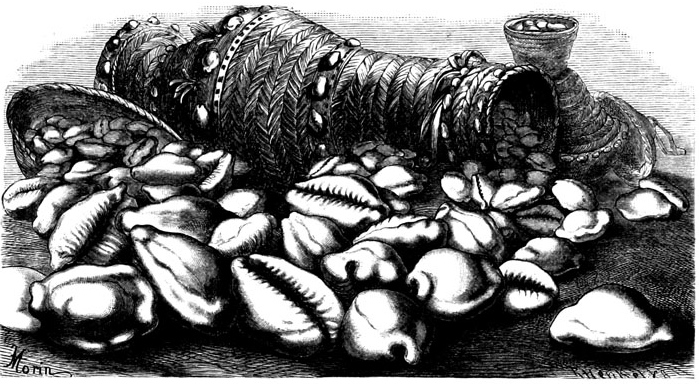The quaint cowrie trade that once linked the Maldives with eastern India
By 1844 shells were still coming from the Maldives to Ceylon (now Sri Lanka) and Bengal, but Chittagong (now Bangladesh) and Calcutta had now replaced Balasore as the destination. Finally, by the time of World War I, this cowrie trade between Maldives and Bengal region had died down.

The cowrie has a history of being an important part of the currency system across several centuries, especially connecting the erstwhile parts of eastern India and the Maldives. From the Maldives, the cowries were mostly shipped to Bengal and some also found their way via the Red Sea and across the Sahara to West Africa's Savannah. It was an important currency within the Maldives itself as well and many visitors commented on it.
The story of the cowrie shell trade between the Maldives and the erstwhile region of eastern India, including the present states of Bengal, Odisha, and Bangladesh, can be traced back several centuries. The earliest reference to the cowrie shell trade of Maldives was made by the Persian traveller Sulayman al Tajir (9th century), followed by Arab traveller Al Mas'udi (943 A.D.) and Alberuni (1020 A.D.). Alberuni noted that the islands of “India's west coast can be distinguished by their chief products, the Diva Kudha- islands of cowries, and the Diva Kanbar- islands of coir, between the Maldives and Laccadives.” Tabakat-t-Nasiri in 1240 A.D. also noted this cowrie trade between Maldives and Bengal and Odisha as well as traveller Ibn Beithar (died 1248). Later on, traveller Ibn Battuta (who was in Maldives around 1343 and stayed for a period of 18 months) - also noted the same.

By the time the Portuguese came in the 17th century the cowrie trade was already an important part of the Maldives' economy. However, in the nearby regions of Malabar Coast and Ceylon, the cowrie trade was very limited. Ceylon witnessed an influence of cowrie trade only during the Dutch colonial rule from the Maldives by end of the 17th and much part of the 18th centuries. British civil servant H.C.P. Bell (posted in Ceylon) spoke about the Dutch monopoly of cowrie during this time between Maldives and Ceylon and the Dutch had sent an investigation to Maldives from Ceylon in 1602. Bell mentioned (in his “Maldive Islands”, pg 98 and 229) - “By 1640 a vessel was sent from Ceylon to Maldives with rice to explore cowrie trading possibilities and trading began soon after.”
Bell also spoke about the travel ('Maldive Islands’, pg 135- 1883) of how typically the Maldive ships would sail “late in August or early in September, annually, having the South-West monsoon in their favour, and return in December and January with the North-East monsoon.” Port dues and charges at Male were collected by “royal officials, payable in rice in the seventeenth century and in cowries in the nineteenth”. C.W. Rosset in 1885 in his article On the Maldive Islands, (pg102) notes this taxation method and adds that there “was a 12% tax on imports only, paid in rice, cloth, and cowries.” Rice was the most important item for barter. Ibn Battuta in the 14th century, Gasper Correa in the 16th century, Pyrard in the early 17th century, and C. W. Rosset and H.C.P Bell in the 19th century all noted the import of rice from Bengal in lieu of Bengali rice. Noted Ibn Battutah, for the “islands were incapable of producing sufficient starchy staples for subsistence, while Bengal commonly produced a substantial surplus for export.”
Balasore's importance in cowrie trade
For nearly two centuries at this time, Balasore (in present-day Odisha) was the main trading unit with the Maldives. Balasore was located around 60 miles from the mouth of the Hooghly river on the northwest side of the Bay of Bengal. In recent times, many passages in S. Bhattacharya's work on Bengal's economic history also refer to Balasore as the port where the cowries were purchased. The writing of Bowrey in the 1670s also stated that “The Nabob and Some Merchants' in the area of Balasore had six or seven vessels regularly employed in bringing cowries and coir from the Maldives. Several economic data about departures from Balasore in 1680-1681 to 1706-1707 and arrivals thereby across 1670-71 to 1704-5 also reflect this significant trading route. Hamilton noted “shipping bring from Balasore in Orixia.' 'The town of Ballasore drives a pretty good trade to the Islands of Maldiva. Those Islands ... have no rice or other Grain of their own Product, so that Ballasore supplies them with what Necessaries they want, and, in Return brings Cowries and Cayar for the Service of Shipping.”
The East India Company also traded in the cowrie system, including as currency for the infamous slave trade carried out in West Africa. By 1700, the British were lobbying the Bengali merchants to increase their shipping to the Maldives so that the number of cowries would increase as well. The British interest in cowries died down gradually in the 1830s with the abolition of slavery in Britain and the trade between Maldives and Bengal continued as before - rice for cowries.
Use in infamous slave trade
The use of cowrie for men and women and the slave trade deserves special mention, apart from the rice trade as this played an important part in the region. The time of 18th century saw mainly two types of slaves - agrestic slaves, who were put to work in the land and domestic slaves. The slaves brought to Bengal, were mainly through piracy and the Bay of Bengal became a hotbed for the infamous trade for a large number of nationalities, which included the Burmese, Portuguese, Dutch, English and French.
The geographical location of Kolkata made it a lucrative place for the business, which has also been often spoken about in many Persian and Arabian traveller’s travelogues, including many English newspapers, which carried slave trade-related advertisements across the 1780s-90s. There was also a great demand for slaves from Africa, who were popular across Asia, including India and often worked as soldiers in the army and guards in the royal harem and zenana, the indoor courts of women of the aristocratic royal families. The narratives of the exploitation of men, women and children across this cowrie trade have also found their echo across many channels of popular culture and academic platforms.
By the beginning of the 20th century, the use of cowrie as a currency, began to see a downslide. The story of this began in the 18th century when Balasore’s commercial significance had started to decline gradually, along with the decline of the slave trade and also the introduction of copper currency. Jan Hogendorn spoke about the copper coins introduction in The Shell Money of the Slave Trade (pg 64-65). This was introduced in Odisha in 1807 and by 1781-82, it began in Bengal as Warren Hastings (Governor-General of India from 1773 to 1785) ordered the minting of copper ‘pice’ to save a friend by the name Johannes Matthias Ross of the English East India Company, who on his own account had become heavily overstocked with copper. Though ‘pice’ had little success at first, soon the famous Boulton works at Soho, Birmingham was turning out the coins.
Nevertheless, the cowrie did not die out immediately, but as Holden Furber mentions- “was in retreat and the millions of cowries slowly gave way to the millions of copper pice cut out by the machines of Messrs, Boulton and Watt.” On the other hand, the cowrie market for Maldive shells in West Africa did seem to recover temporarily in the 1830s with the growth of the palm oil trade. By 1844 shells were still coming from the Maldives to Ceylon (now Sri Lanka) and Bengal, but Chittagong (now Bangladesh) and Calcutta had now replaced Balasore as the destination. Finally, by the time of World War I, this cowrie trade between Maldives and Bengal region had died down.
(The author is a Kolkata-based visual anthropologist and author. Views are personal. She can be reached at lopamudramaitra@gmail.com)









Post a Comment